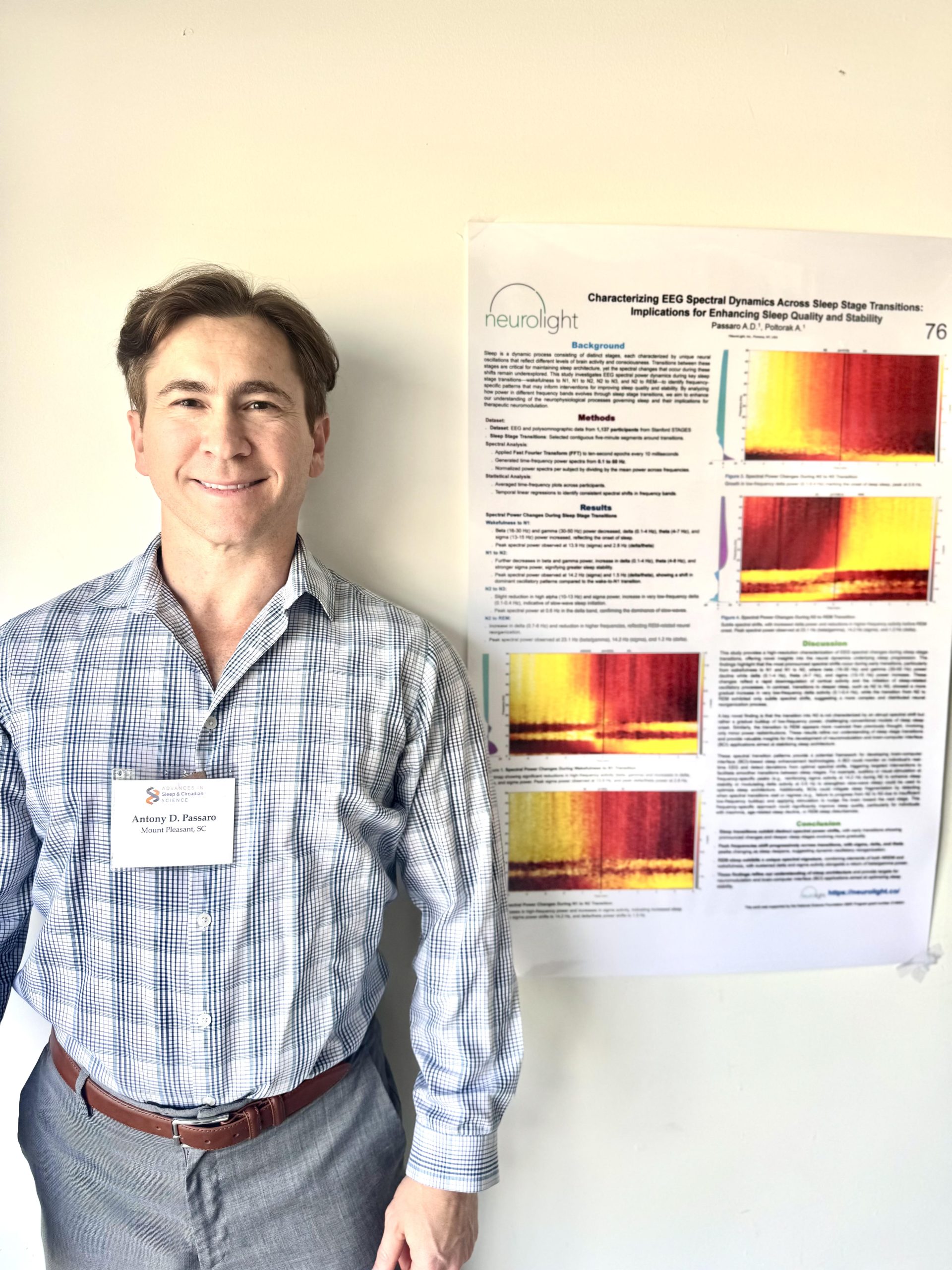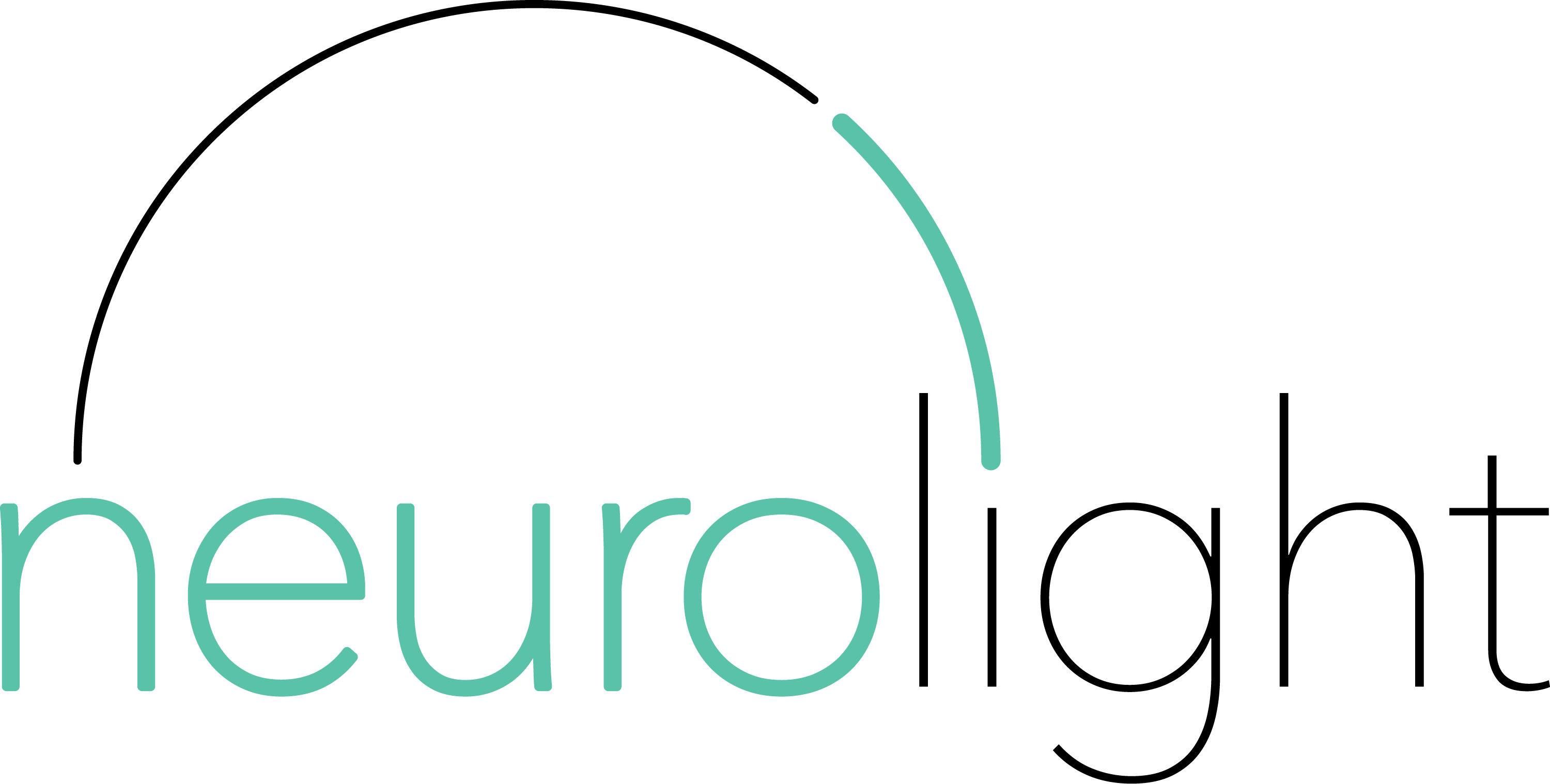 Pomona, New York — April 2025 — NeuroLight, Inc. is pleased to announce the successful presentation of its latest research at the Annual Advances in Sleep and Circadian Science (ASCS) Conference held in Florida by the Sleep Research Society (SRS). Dr. Antony Passaro, NeuroLight’s Lead Neuroscientist, presented the poster “Characterizing EEG Spectral Dynamics Across Sleep Stage Transitions: Implications for Enhancing Sleep Quality and Stability.” The paper offers novel insights into the neural mechanisms governing sleep and highlights potential avenues for therapeutic neuromodulation.
Pomona, New York — April 2025 — NeuroLight, Inc. is pleased to announce the successful presentation of its latest research at the Annual Advances in Sleep and Circadian Science (ASCS) Conference held in Florida by the Sleep Research Society (SRS). Dr. Antony Passaro, NeuroLight’s Lead Neuroscientist, presented the poster “Characterizing EEG Spectral Dynamics Across Sleep Stage Transitions: Implications for Enhancing Sleep Quality and Stability.” The paper offers novel insights into the neural mechanisms governing sleep and highlights potential avenues for therapeutic neuromodulation.
Key Findings
The study examined electroencephalographic (EEG) and polysomnographic data from over 1,000 participants. By analyzing changes in EEG spectral power during transitions between wakefulness, N1, N2, N3, and REM stages, the team discovered:
- Pronounced Early-Stage Changes: Sharp declines in beta/gamma power and concurrent increases in delta/theta/sigma power mark the transition from wakefulness to light sleep (N1, N2).
- Subtle Deep-Sleep Onset: Instead of an abrupt shift, the move from N2 to N3 shows a gradual buildup of very low-frequency delta activity—a refinement of conventional deep-sleep models.
- Targeting Sleep Stability: These spectral patterns suggest the viability of neuromodulation approaches for optimizing sleep, such as modulating specific frequency bands to promote smoother transitions and better rest.
Implications for Sleep Health and Prevention of Neurodegenerative Diseases
NeuroLight’s findings pave the way for neuromodulation treatment of sleep disorders, offering hope for individuals experiencing insomnia, age-related cognitive decline due to erosion of slow-wave sleep (SWS), or REM anomalies. Future research will investigate if the cortical signatures found to be correlated with stage transitions are causal and explore how targeted stimulation at key frequencies could selectively induce the desired sleep stage, thereby enhancing natural sleep architecture and reducing sleep fragmentation and erosion of slow-wave and REM sleep occurring with age.
“This research marks an important step in understanding precisely how our brains transition between sleep stages,” says Antony D. Passaro, Ph.D., Lead Neuroscientist at NeuroLight and the principal author of the study. “We believe that harnessing these spectral signatures could fundamentally improve how we diagnose and treat sleep disturbances.” “The cortical signatures shown to be correlated with sleep stage transitions may play a causal role in these processes,” says Alexander Poltorak, the Founder and President of NeuroLight and co-author of the paper. “We are cautiously optimistic that, if confirmed in future studies, this discovery may pave the way to using neuromodulation to prevent or delay some neurodegenerative processes associated with old age.”
